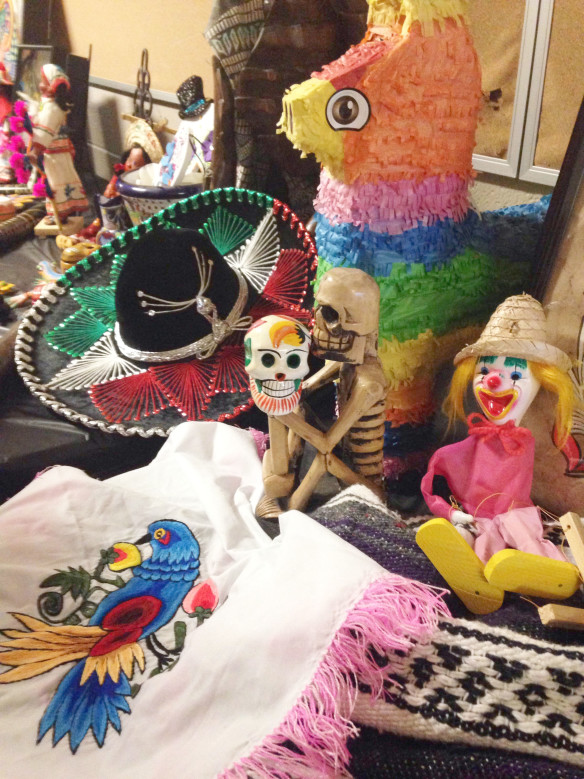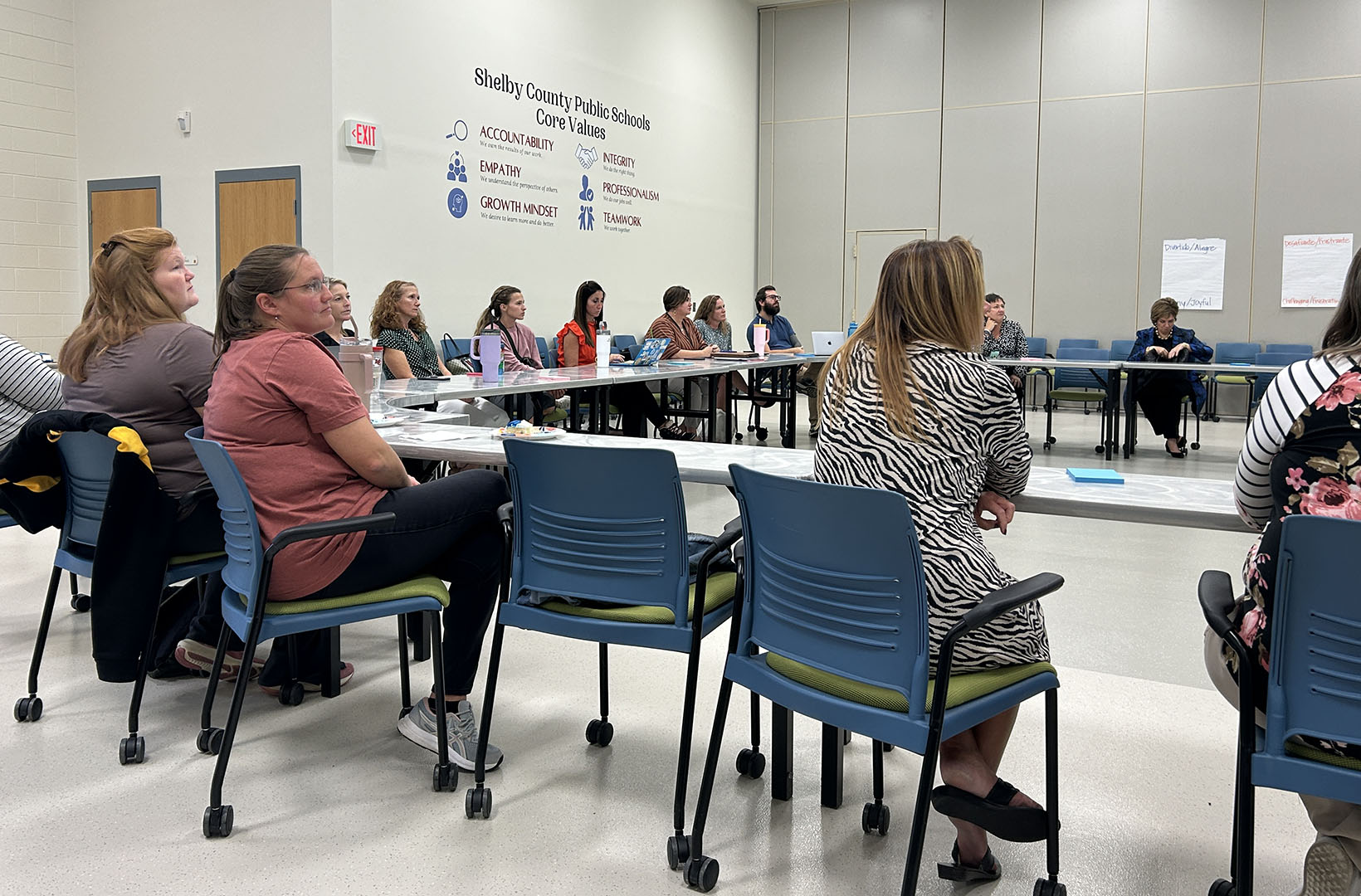
These items were displayed at a Heath-area school global kickoff last year. The items were brought back from Mexico by a student’s mother.
Photo submitted by Montanna Boyd
By Marianne R. Byers
marianne.byers@mccracken.kyschools.us
Many educators are overwhelmed when thinking about integrating a global viewpoint into their schools. Here are some step-by-step tools that will make it easier to bring the varied perspectives of the world directly to the feet of your school’s children, helping your school achieve global competency.
Set up a Global Committee to help brainstorm.
The Heath-area schools in McCracken County began this daunting task by setting up a support committee to aid the brainstorming process. We call this our Global Committee. It is comprised of administrators, teachers, parents and community members with ties to the international community. This committee ensures that our schools follow a unified approach so students seamlessly transition from school to school and build on their knowledge.
This brainstorming group spent months thinking of the global opportunities our community offers and also of the world cultures our students could best learn. Teachers were guided to have the students make “I can” statements regarding international issues. The Global Committee met once per month the first six months and then quarterly thereafter.
The Heath-area schools serve children in kindergarten through 8th grade. We chose regions of the world on which each grade would focus. We did not want repetition in the cultures our students were studying. For example, at Heath Elementary School, kindergarten is studying France, 1st grade is studying China, 2nd grade is studying Italy, 3rd grade is studying Australia, 4th grade is studying Mexico, 5th grade is studying England, specials are studying Spain and special education is studying Jamaica.
Have a global kickoff to get students interested.
We decided to begin by having a global kickoff to get our students and their families excited about global competency. We offered this free event one evening toward the beginning of the school year. Those invited to help were area educators and our students’ family members who have ties to other cultures.
We trained some of our students regarding the role of an ambassador. Those students served as liaisons between the global kickoff attendees and the people presenting. There was international food, booths displaying memorabilia from various cultures in the world, and music and instruments native to other cultures.
Representatives from Murray State University presented global perspectives, representatives from West Kentucky Community and Technical College brought students from their World Language Club, and the Paducah Convention and Visitors Bureau discussed their UNESCO Creative Cities Network. Families and students brought food and cultural items from Syria, Japan, Mexico, Vietnam and Korea. Our students were very excited about beginning the quest to learn more about our world’s varied cultures.
Train teachers to create global lesson plans.
Our Global Committee determined that our students needed exposure to other cultures and our teachers needed to be trained how best to do that. We began by utilizing the vast resources available through VIF International.
During professional development offered after school, our teachers navigated through the VIF website and were given guided practice utilizing the websites’ global education. Then our teachers were aided through the formation of their own global lesson by taking a lesson they were planning to teach and incorporating global aspects to it. The teacher taught the lessons and then reflected on it afterward with another teacher. The colleagues discussed what worked, what did not work and what could have been done differently.
Each nine weeks, our teachers are encouraged to complete this process. Initially, teachers were asked to create one global lesson plan per quarter. Once teachers began to catch on how to create global lesson plans and see the importance of them, they began to do more. Teachers hesitated and were unsure at first, but it was fairly easy to gain their cooperation after they began creating and then discussing global lesson plans.
Have visible representations of global emphasis throughout school buildings.
The Global Committee also created a visual cue to display in each school to tie in a sense of international education for every student. In our building are four banners with our global logo and “Beyond the Bluegrass” slogan. Each classroom and office has a poster. We have a bulletin board with a world map displaying international locations with which our school has connected and international locations that work with Paducah businesses. Our art students created a global competency art panel for display.
This year, our students have: Skyped with students in Africa, converted the U.S. dollar to the Chinese yuan, studied about U.S.-Canadian relations throughout history, learned Asian games, experienced aspects of the Hispanic holiday Día de los Muertos, studied African musical traditions, learned of Darwin’s endeavors in the Galapagos Islands of South America, and much more. Our students also are offered the opportunity to enroll in a world language as an elective course.
In our schools, we want to ensure that our students feel comfortable in a world or global setting. To do that, our students need regular exposure to and understanding of the world’s people year after year. We believe we have created solid avenues to this end, and we intend to keep that momentum going toward our goal of educating globally competitive and responsible citizens.
Marianne R. Byers teaches Spanish I at Heath Middle School in Paducah. She is the teacher leader for the Learn and Launch grant.



Leave A Comment